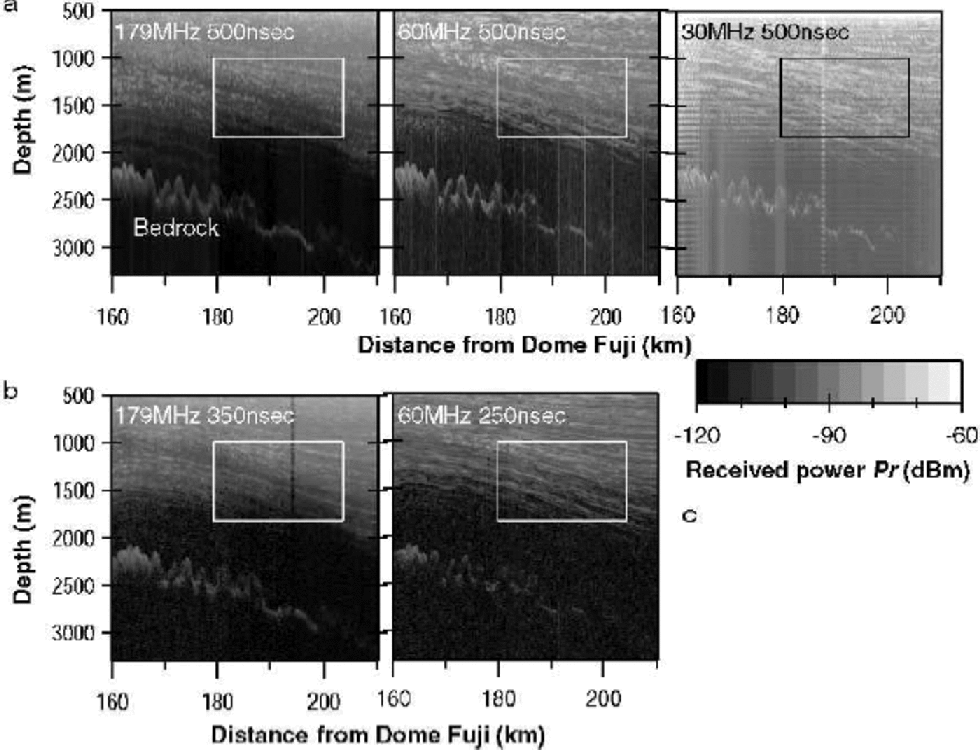Matsuoka, K., H. Maeno, S. Uratsuka, S. Fujita,T. Furukawa and O.Watanabe. 2002.
A ground-based, multi-frequency ice-penetrating radar system. Ann. Glaciol., 34,171-176.
Please replace Figure 4, which is missing panel C, with the following.

Fig. 4 Examples of a dataset compiled along the main flowline from Dome Fuji, East Antarctica. (a) Data from the present study. the 60 and 179 MHz radars were synchronized as in Figure 2c. the 30 MHz radar was operated independently from a separate platform. Periodic signals in the columns of 30 MHz, typically shown between 160 and 165 km, are noise. (b) Data on the same traverse, but from a previous study without the multi-frequency system (Fujita and others, 1999). for (a) and (b), the abscissa positions of 160 and 210 km are distances from Dome Fuji; the 160 km location is 75˚53’ S, 41˚18’ E (3690 m a.s.l.); the 210 km location is 75˚27’ S, 41˚47rveyed traverses in this study (gray lines).



